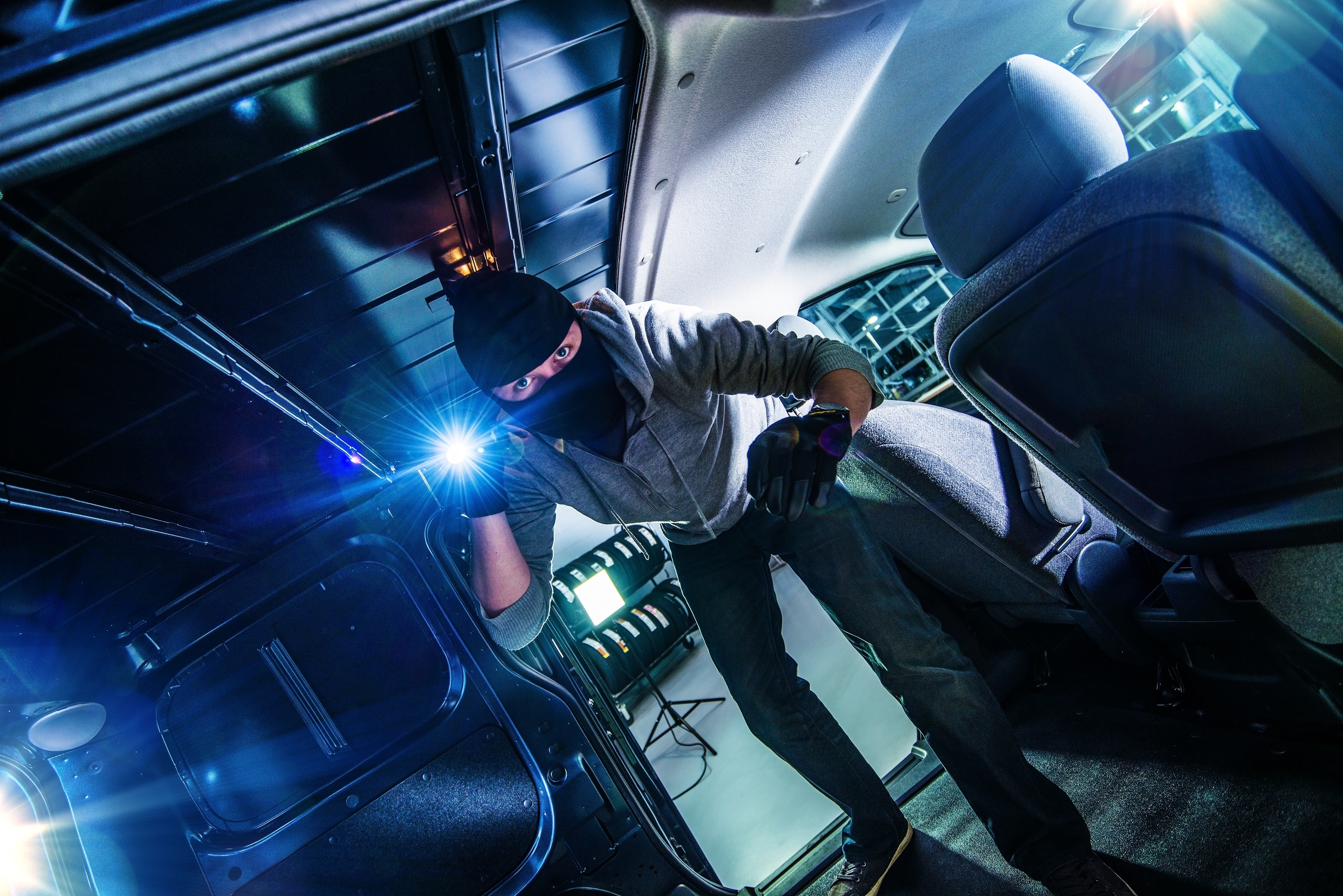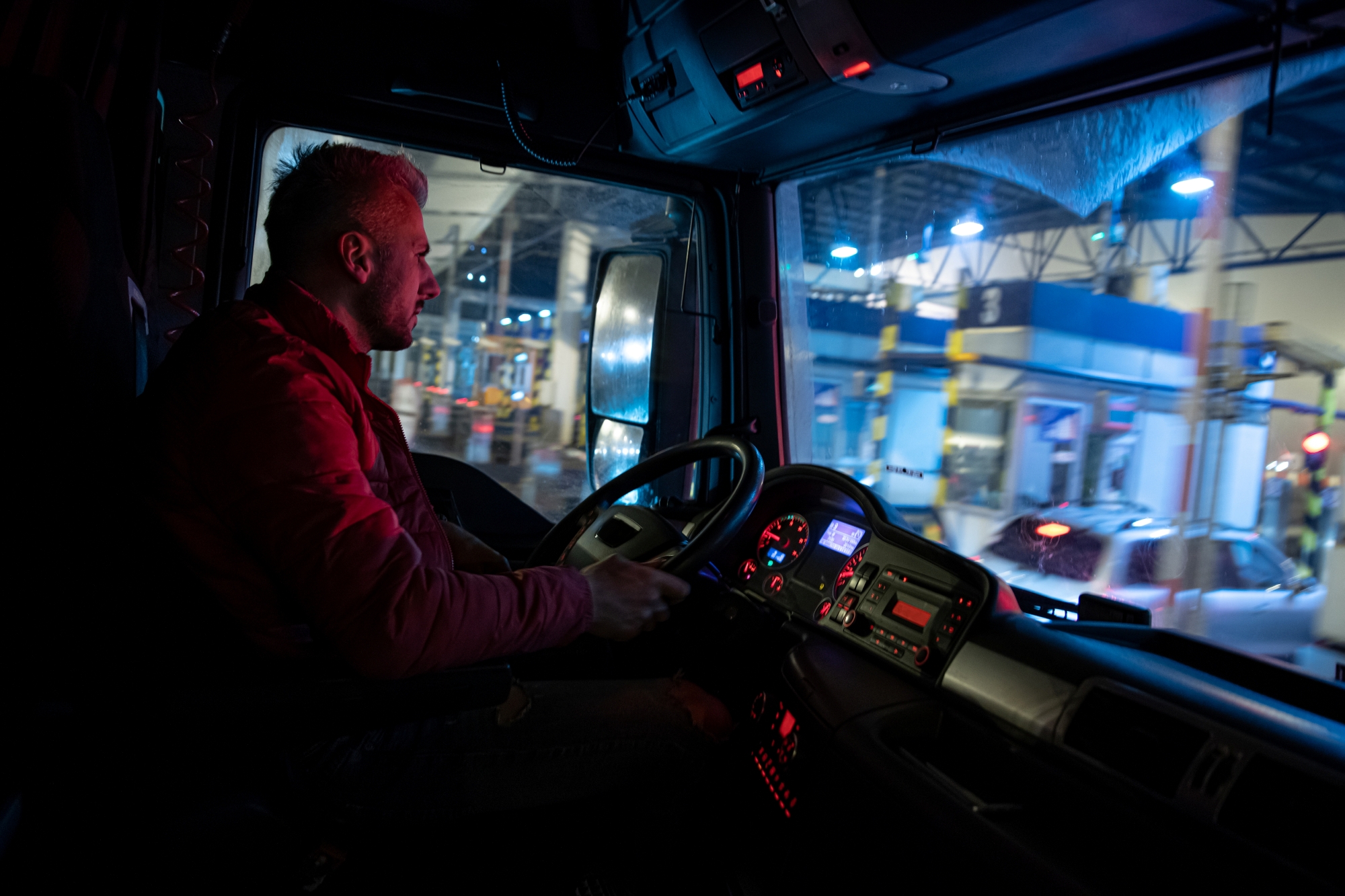
Miranda Blake
Tips til at holde dit køretøj sikkert: Beskyt din lastbil mod tyveri
Oprettet: 14.11.2024
•
Opdateret: 14.11.2024
Transportvirksomheder i Storbritannien og Europa kan reducere risikoen for tyveri af køretøjer og gods betydeligt. At beskytte lastbilen handler ikke kun om at sikre selve køretøjet; det involverer en holistisk tilgang, der omfatter teknologi, uddannelse, samfundsengagement og proaktiv planlægning. Med de rigtige foranstaltninger på plads kan flådecheferne sørge for chaufførernes sikkerhed og aktivernes integritet og dermed skabe et sikkert miljø for deres aktiviteter.
Hvad chauffører bør gøre
Sikring af køretøjet
Forbedr dit køretøjs sikkerhed ved at bruge forskellige anordninger som f.eks. hængelåse, unikt nummererede plomber og vippesnore. Disse bør anvendes umiddelbart efter lastning for at skabe et ekstra lag af beskyttelse mod uautoriseret adgang.
Det er vigtigt at foretage grundige kontroller. Efter hvert stop skal du bruge et øjeblik på at inspicere din lastbil og dens last. Se efter tegn på manipulation eller mistænkelig aktivitet. Årvågenhed er afgørende for at forebygge tyverier.
Dokumentation
Oprethold en omfattende tjekliste for køretøjssikkerhed. Den skal være let tilgængelig, så den kan gennemgås af grænsepolitiet eller andre myndigheder, når det er nødvendigt. Det viser ikke kun dit engagement, men hjælper også i efterforskningsprocessen, hvis der sker tyveri.
Sikre steder
Vælg parkeringspladser, der er godt oplyste og travle. Områder med meget fodgængertrafik og overvågningskameraer er mindre tiltrækkende for tyve. Når det er muligt, så brug sikre parkeringsområder, der er udstyret med hegn og avancerede overvågningssystemer eller sikkerhedspersonale. Disse steder giver et ekstra lag af sikkerhed. Hvis du skal parkere om natten, skal du vælge steder, der er oplyste og overvågede.
Find sikker lastbilparkering på din transitrute ved hjælp af [SNAP-kortet] (https://snapacc.com/map/).

Teknologi og udstyr
Indførelse af avanceret teknologi kan øge dit køretøjs sikkerhed betydeligt. Udstyr din lastbil med moderne systemer, herunder GPS-sporing, startspærrer og panikalarmer. De afskrækker ikke kun tyve, men hjælper også med at finde dem, hvis uheldet er ude.
Ruteplanlægning
Desuden kan en effektiv planlægning af dine rejser hjælpe dig med at undgå højrisikoområder. Brug software, der giver dig mulighed for at kortlægge leveringsruter, mens du styrer uden om kendte hotspots for godstyveri. Ved at implementere telematik og GPS-teknologi til at overvåge dit køretøj i realtid kan du spore dets placering og sikre, at du overholder de planlagte rejser.
Hvad flådeoperatører bør gøre
Sikkerhedsprotokoller og -systemer
Et veldefineret sæt sikkerhedsprotokoller er afgørende for alle chauffører. Som [flådeoperatør] (https://snapacc.com/fleet-operators/) kan du give omfattende skriftlige retningslinjer, der beskriver de sikkerhedsforanstaltninger, de skal følge. En sådan tilgang sikrer, at alle er på samme side med hensyn til sikkerhedspraksis.
Du bør uddanne chaufførerne i, hvordan de effektivt kan bruge de systemer, der er installeret i deres lastbiler. Kendskab til disse enheder kan forbedre deres effektivitet. Det er også en god idé at uddanne dem i potentielle trusler og vigtigheden af at være på vagt. De bør kende til tyvenes almindelige taktik og vide, hvordan de skal reagere.
Hvis du holder dine lastbiler i optimal stand, mindsker du risikoen for nedbrud, der kan føre til tyveri. Implementer en proaktiv vedligeholdelsesplan for at sikre, at dine køretøjer altid er i god stand. Regelmæssige tjek kan forhindre mekaniske fejl, der kan gøre dine lastbiler sårbare.
Kommunikation og fællesskab
Etablering af klare kommunikationskanaler er afgørende for effektiv sikkerhedsstyring. Oprethold en åben kommunikation mellem chauffører, disponenter og sikkerhedspersonale. Det giver mulighed for øjeblikkelig rapportering af mistænkelig aktivitet eller problemer med køretøjet. Opfordr chaufførerne til at tjekke ind med jævne mellemrum i løbet af deres vagter.
Samarbejde med lokalsamfundet kan forbedre dine sikkerhedsforanstaltninger. Samarbejd med andre virksomheder og det lokale politi om at dele oplysninger om potentielle trusler. En kollektiv tilgang kan øge bevidstheden og føre til mere effektive strategier til forebyggelse af kriminalitet. Deltag i initiativer i lokalsamfundet, der fokuserer på dette - opbygning af relationer kan skabe et støttenetværk, der hjælper med at beskytte dine aktiver.
Indsatsplaner
At have en solid plan for nødsituationer kan afbøde virkningerne af tyveri. Udvikl klare protokoller til at reagere på hændelser. Den bør indeholde trin til rapportering, kontakt med politiet og underretning af din forsikringsudbyder. Sørg for, at alle chauffører er bekendt med dem - de skal vide, hvordan de skal handle hurtigt og effektivt.
Situationsbevidsthed
At træne chauffører i at være opmærksomme på deres omgivelser kan forebygge tyveri. Lær dem, hvordan de kan identificere mistænkelig aktivitet omkring deres køretøjer, og opfordr dem til at stole på deres instinkter og rapportere alle usædvanlige hændelser. Understreg desuden vigtigheden af at prioritere den personlige sikkerhed frem for lasten. Hvis de konfronteres med en tyv, skal de adlyde og rapportere hændelsen til myndighederne, så snart det er sikkert at gøre det.
Overvågning af brændstoftransaktioner med SNAP
Vi leverer et smart betalingssystem, der automatisk registrerer og sporer brændstoftransaktioner. Når chaufførerne tanker deres køretøjer på et af de mere end 3.500 steder i Storbritannien, skal de blot vise deres SNAP Fuel-kort for at betale for transaktionen, hvilket eliminerer behovet for kontanter eller kreditkort og strømliner processen.
Systemet tilføjer automatisk hver brændstoftransaktion til den konto, der er knyttet til køretøjets nummerplade. En sådan automatisering fjerner behovet for, at chauffører manuelt indsamler og indsender kvitteringer, hvilket reducerer den administrative byrde og risikoen for fejl.
Flådecheferne modtager månedligt specificerede fakturaer, der giver et detaljeret overblik over aktiviteten for alle deres køretøjer, hvilket gør det nemt at overvåge brændstofforbrug og udgifter på tværs af hele flåden.
SNAP Fuel kan integreres med andre SNAP Account-tjenester, så flådechefer ikke kun kan overvåge brændstoftransaktioner, men også parkerings- og vasketjenester på en enkelt konto, hvilket giver et omfattende overblik over drift og udgifter. [Læs mere om SNAP Fuel her] (https://snapacc.com/snap-fuel/).



